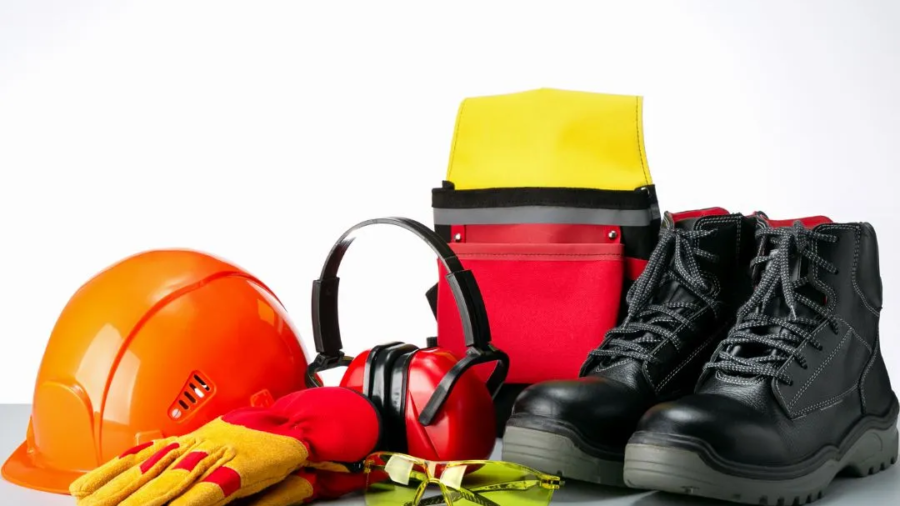In the demanding world of industrial operations, safety is paramount. Workers are often exposed to hazardous environments where accidents can happen due to various risks such as chemical exposure, extreme temperatures, sharp objects, or electrical hazards. Ensuring their safety is not just a legal obligation but also a moral responsibility for employers.
One of the most effective ways to enhance workplace safety is through the use of proper safety uniforms. These uniforms are designed to provide protection, improve visibility, ensure compliance with safety regulations, and enhance worker comfort.
In this blog, we will highlight the importance of investing in high-quality industrial uniforms and how they contribute to a safer and more efficient workplace.
Protection Against Hazards
Industrial environments pose numerous hazards that can lead to severe injuries if proper safety measures are not in place. Workers’ uniforms serve as a crucial protective barrier against these risks, ensuring that workers remain safe while performing their duties.
Common Hazards and Protective Features:
- Chemical Spills: Specialized safety uniforms are made from materials resistant to chemicals, preventing harmful substances from coming into direct contact with the skin.
- Heat and Flames: Flame-resistant (FR) fabrics help protect workers from burns and high-temperature environments.
- Electrical Arcs: Arc-rated uniforms provide protection against electrical hazards, reducing the risk of electrocution and burns.
- Sharp Objects and Cuts: Cut-resistant materials, such as reinforced fabrics, protect against punctures and abrasions.
- High-Impact Areas: Some industrial settings require impact-resistant padding on uniforms to safeguard workers against heavy machinery and falling objects.
Investing in uniforms with these protective features ensures that workers are equipped with the necessary safety measures to mitigate risks and prevent workplace injuries.
Ensuring Compliance and Standards
Governments and industry bodies have established strict safety standards to protect workers in industrial settings. Companies must comply with these regulations to avoid legal penalties and ensure a safe working environment.
Key Safety Standards:
- OSHA (Occupational Safety and Health Administration): Sets guidelines for workplace safety, including the use of protective clothing.
- ISO (International Organization for Standardization): Provides global safety standards for protective clothing.
- NFPA (National Fire Protection Association): Establishes standards for flame-resistant workwear in hazardous environments.
By adhering to these standards, companies demonstrate their commitment to worker safety and avoid potential legal liabilities. Properly certified safety uniforms ensure compliance, protect employees, and uphold the company’s reputation.
Enhancing Visibility and Communication
One of the primary functions of safety uniforms is to enhance worker visibility, especially in high-risk environments such as construction sites, factories, and warehouses.
Visibility Features:
- High-Visibility Colors: Bright colors like neon yellow, orange, and green ensure that workers are easily seen.
- Reflective Strips: These strips increase visibility in low-light or nighttime conditions, reducing the risk of accidents.
- Identification Markings: Safety uniforms often include labels or name tags to quickly identify personnel, particularly in emergencies.
By incorporating these visibility features, companies can significantly reduce the likelihood of workplace accidents and enhance overall safety.
Promoting Worker Comfort and Productivity
While safety is a top priority, worker comfort should not be overlooked. Uncomfortable or poorly designed uniforms can hinder movement, cause discomfort, and decrease productivity.
Key Comfort Features:
- Breathable Fabrics: Lightweight and moisture-wicking materials help keep workers cool and dry.
- Ergonomic Fit: Well-fitted uniforms improve mobility and reduce fatigue, enabling workers to perform tasks efficiently.
- Durability: High-quality fabrics ensure long-lasting use, reducing the need for frequent replacements.
When workers feel comfortable in their uniforms, they are more likely to remain focused and productive, contributing to a more efficient work environment.
Reducing the Risk of Contamination
In industries such as food processing, pharmaceuticals, and clean rooms, preventing contamination is crucial. Safety uniforms play a vital role in maintaining hygiene and ensuring product integrity.
Contamination Prevention Measures:
- Disposable Uniforms: Used in sterile environments to prevent the spread of contaminants.
- Easy-to-Clean Materials: Some uniforms are made from materials that resist stains and bacteria, allowing for thorough cleaning.
- Protective Coveralls: Designed to prevent cross-contamination in sensitive work areas.
By using properly designed uniforms, companies can maintain high hygiene standards, comply with industry regulations, and protect both employees and products from contamination risks.
Conclusion
Proper safety uniforms are a fundamental component of workplace safety in industrial settings. They protect workers from hazards, ensure compliance with safety standards, enhance visibility, improve comfort, and reduce the risk of contamination. By investing in high-quality safety uniforms, companies not only safeguard their employees but also enhance productivity and maintain industry compliance.
We specialize in providing top-quality safety uniforms tailored to your industry’s needs. Contact us today as we are a leading uniform manufacturer in Mumbai that prioritize safety, comfort, and compliance.

